Training and Development in Career Success: A Critical Reflection and Research Planner HRM4032
- Subject Code :
HRM4032
Task 1: Critical Reflection on Training and Development in Career Success
Training and development play a significant role in career success and this is because the world is competing and changing in the global world. This critical reflection evaluates the importance of training and development in Human Resource Management (HRM) and its connection with the advancement of the career along with reflecting on the principles and practices of the HRM study (Sonnentag et al. 2004).
Understanding the Role of Training and Development: I strongly believe Training and development is given importance in organization development because it is one of the significant tools that will assist not only in enhancing the abilities, information, and performance of the employee but also in enhancing the career of employees and the performance of the organisation as well (Seibert et al. 2024). I have understood that Business competencies are designed systematically to ensure that the employee possesses the required competencies to make the workforce capable of organizational challenges. On this basis, in the global environment, it is beneficial to accumulate knowledge so that a person can be dynamic in the market promotion process (Els & Meyer, 2023).
Impact on Career Success: While assessing careers from the perspective of the HRM it is crucial to understand that the term career success is categorized into objective success (e.g., promotions, salary increases) and subjective success (e.g., job satisfaction, career fulfilment). Therefore, the processes of training and staff development directly influence the results of career-related goals (Burke & McKeen, 1994). From the practical-reality angle, this simply implies that through learning at the workplace and thus improving their skills, the envisaged goal of obtaining a better job with increased remunerations is attainable. From the employee perspective, these programs are more likely helpful for job satisfaction since they enable workers to perform their tasks competently and with confidence and thus are likely to make them feel more contented, for the reason that they are effectively utilizing their careers (Tan, 2010).
HRM Research Principles and Practices: While exploring I came across numerous research that have been done in the field of Human Resource Management that reinforce career success through training and development. Analyzing the articles in Human Resource Management Journal and Human Resource Development Quarterly, the reviews of best practices emphasize how professional development is relevant to the advancement of a career (Wang et al. 2020). As the theory of HRM suggests if one takes into account the quantitative research methods then a better understanding might be achieved regarding the value of training that has been undertaken in years and how it may impact the prospective career (McDonald & Hite, 2023).
Moreover, it is imperative to consider some cross-cultural issues in the global perspective of HRM for training and development. Therefore, the application of training interventions might differ with cultures or organizational practices, and that calls for appropriate cultural and contextual training interventions that are the responsibility of human resource professionals (Okolie et al. 2020).
Challenges and Considerations: However, I do see that training and development are not without some drawbacks. It is necessary to identify the cost that is incurred in implementing these programs and the estimated revenue expected from them (Burhan Ismael et al. 2021). Furthermore, the learning process may not always be efficient for all employees because the training methods should be customized. The training opportunities can also create prejudice and more so, the HR professionals must ensure that they also maintain the technical training that boosts employment opportunities for all employees (Prasetyo et al. 2021).
In light of the above findings, I can conclude that training and development have significant functions in meeting career needs in the domain of HRM broadly. It is advantageous to the employees in the view of career progression and organisational development since these programs charter at enhancing the key strength and capabilities of people at workplace. Nonetheless, the results of training and development activities are different in continuity, purpose, and cultural competence. They continue to be the core of interest to HRM researchers while serving as tools for the definition of what constitutes the benchmark and fresh approaches to the development of professional training.
Task 2: BUSINESS Research Planner
TOPIC Training and Development in Career Success
STEP 1: State and Analyse your topic
The topic, Training and Development in Career Success, emphasizes the central understanding that training and development are critical components in the realisation of career objectives and organisational performance. It involves defining training and development as a sub-discourse of HRM that focuses on improving the employees performance and career growth. Both promotion and salary increase, job satisfaction, and career fulfilment need training and development. It also examines the way training initiatives can be managed in an organisation to achieve goals and build and maintain a proficient workforce that can effectively respond to issues arising from the global society. Moreover, it highlights the challenges that may arise-challenges such as cost concerns, cultural and environmental conditions, and differences in training strategies to achieve the highest levels of accomplishment and efficiency of such training activities in promoting career development and organization learning. It is more crucial to have a pursued expertise on the topic of HRM with special awareness of the practices and existing literature that contains specific guidelines for presenting ability development initiatives that are effective for learners and optimal for an organizations purposes.
KEY CONCEPTS
STEP 2: Identify the key concepts (highlighted above)
STEP 3: Find synonyms or alternative keywords


Table 1: Annotated Table of Peer-Reviewed Journal Articles on Training and Development
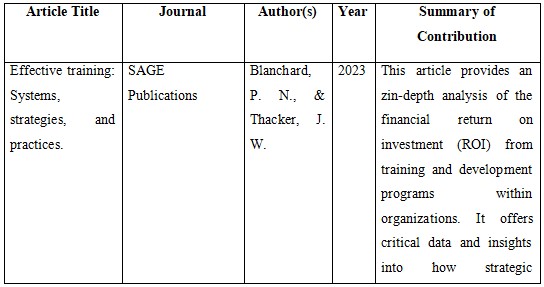
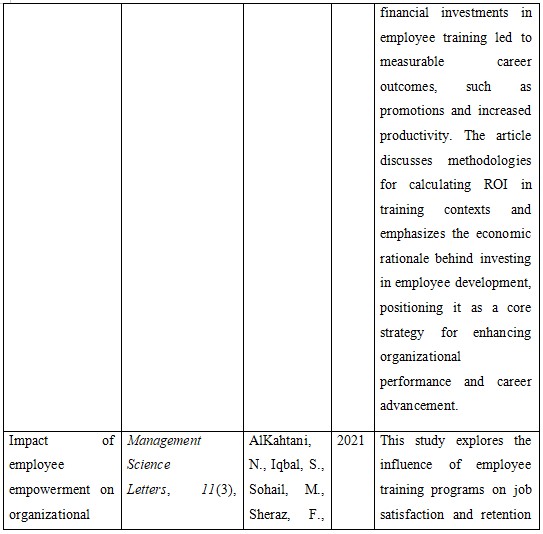
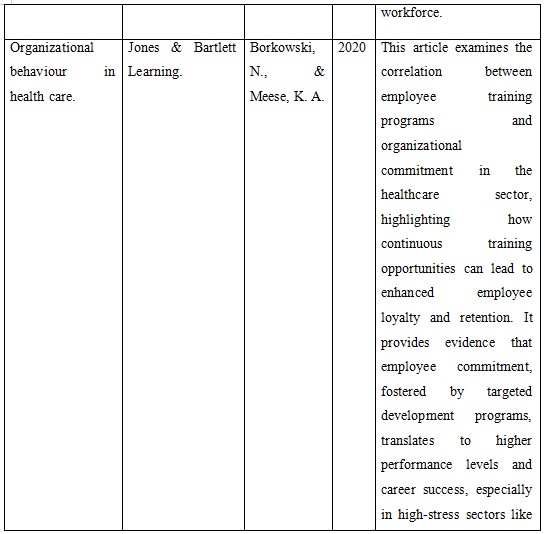
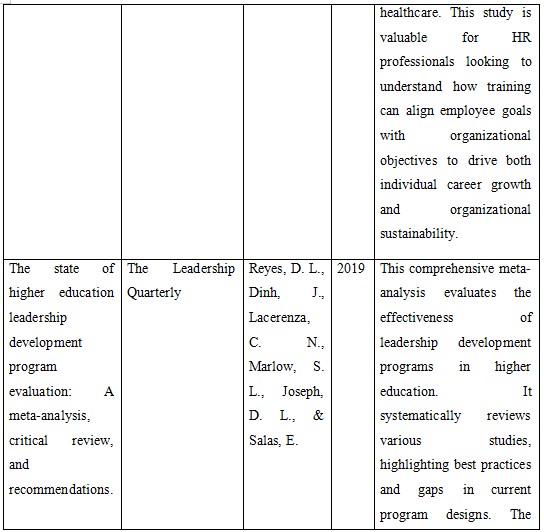
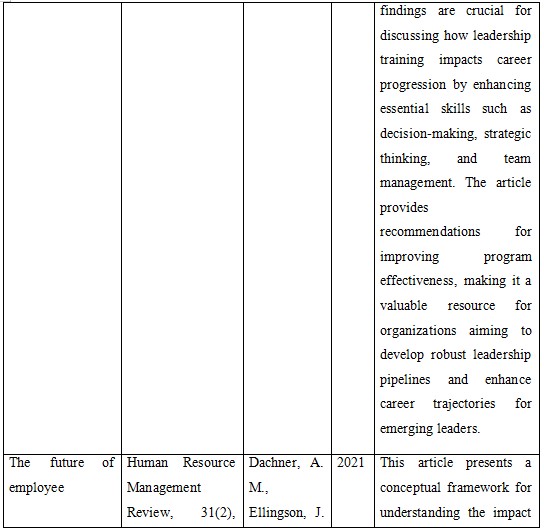
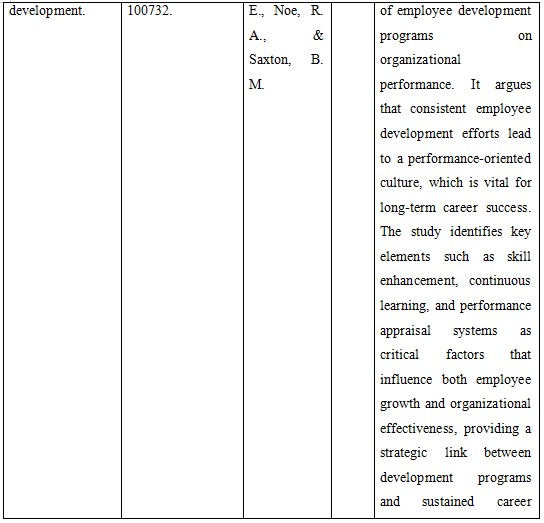
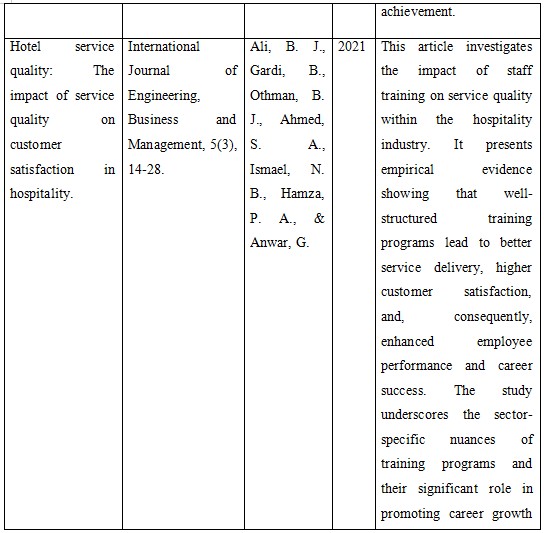
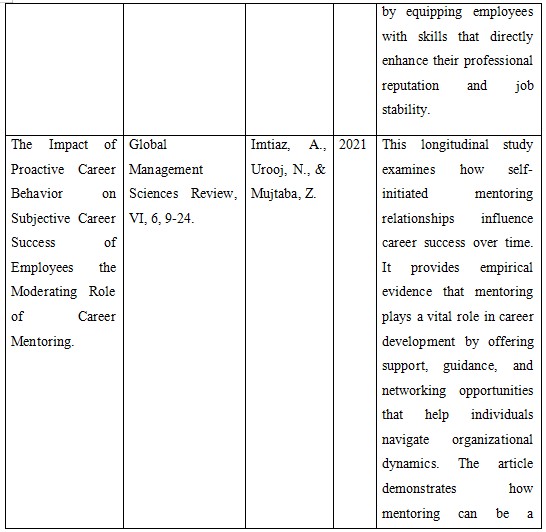
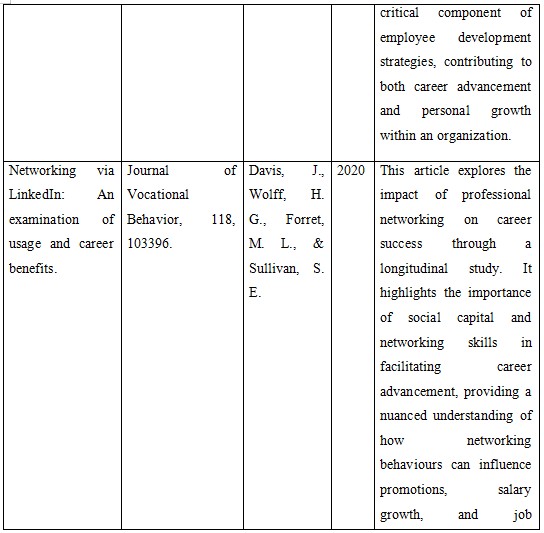
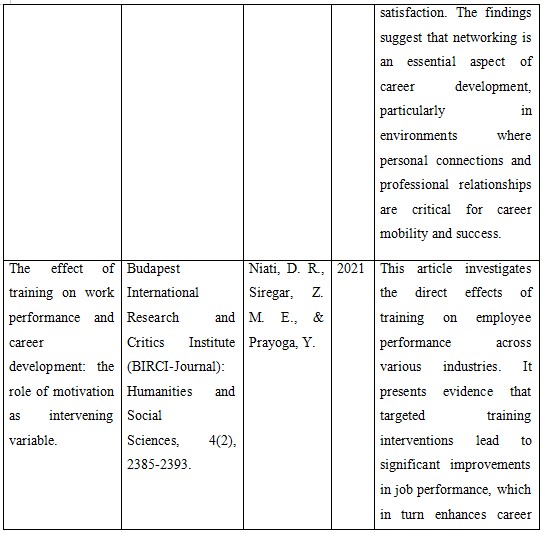
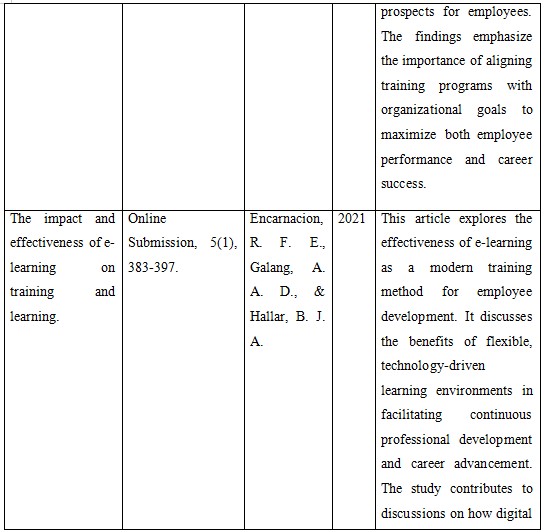
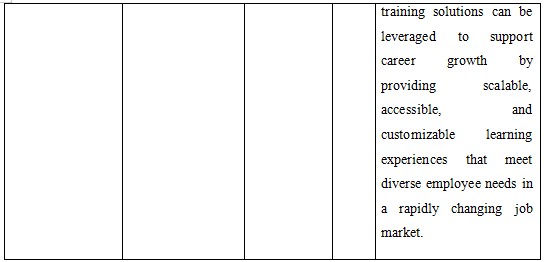 />
/>
Portfolio Task 3: Data Collection
Introduction to Data Collection
Video Overview: In the video provided by Rolin Moe, key aspects of data collection in quantitative research are covered. Key takeaways include:
1.Developing Questionnaire and Survey Instruments: A special focus is laid on developing clear and concrete working definitions to produce quantitative data. It also explains what needs to be taken into account when developing the questions for a survey, lecture, or any other research, these have to be particular, the sources of bias always need to be avoided when forming the question, and the questions should always be relevant to the goals of the research (Smith, 2004). It also describes how to write questions, how to choose the response options, and how to make sure that the instrument used is both valid and reliable.
Key Points:
- Understand the characteristics of quantitative research.
- Develop solid research questions and objectives.
- Design surveys and questionnaires to ensure data reliability and validity (Passmore et al. 2002).
Additional Reading
Summary: In the context of the given article, the author wanted to know how Mixed Methods Research can be used in the development of quantitative data collection tools. This goes to analyze efforts of supplementing qualitative information with quantitative techniques to achieve the best-balanced approach in conducting surveys and questionnaires that can gather a full spectrum of data related to the research question (Onwuegbuzie et al. 2010).
Critical Analysis of Data Collection Instruments
Critical Analysis:
When designing the data collection instruments for this research, adequate measures were taken to guarantee internal reliability and construct validity in measuring the impact of training programs on career outcomes (Dunemn et al. 2017).
Quantitative Instrument: In creating the Employee Training Effectiveness Survey, the aim was to put quantitative measures on employee perceptions of training initiatives. A Likert-scale measurement is employed to provide a differentiated assessment of participants perceptions of the training regarding different features (Arthur et al. 2003). The survey contains items on practical considerations, self-estimates, and anticipations, which are necessary to determine the training effect in the short term. This approach is in line with Ingersoll and Strong (2011) who insist on the need for tangible results of investment in training.
Qualitative Instrument: The Semi-Structured Interview Guide is designed to provide detailed information about participants practice with training. Questions that require flexible answers are also used to investigate more subjective areas and experiences of the individual, thus giving more insights into the effectiveness of the training. Colquitt and others (2000) confirm that this method is useful because it can be effective in capturing the subjective realities of a specific population. They specifically focus on the impacts and challenges that the individual undergoes to identify factors that may not be perceived through quantitative values (Whiston et al. 2019).
These two tools are used hand in hand to ensure that they give the whole picture of how the training has been effective. The quantitative survey provides probabilities and the extent of the identified factors, whereas the qualitative interviews add flavour and fill in the gaps in the results (Whiston et al. 2019). This way, both information sources support the findings reviewed in the literature on training and development concerning the impact of training programs on career outcomes.
Are you struggling to keep up with the demands of your academic journey? Don't worry, we've got your back!
Exam Question Bank is your trusted partner in achieving academic excellence for all kind of technical and non-technical subjects. Our comprehensive range of academic services is designed to cater to students at every level. Whether you're a high school student, a college undergraduate, or pursuing advanced studies, we have the expertise and resources to support you.
To connect with expert and ask your query click here Exam Question Bank

